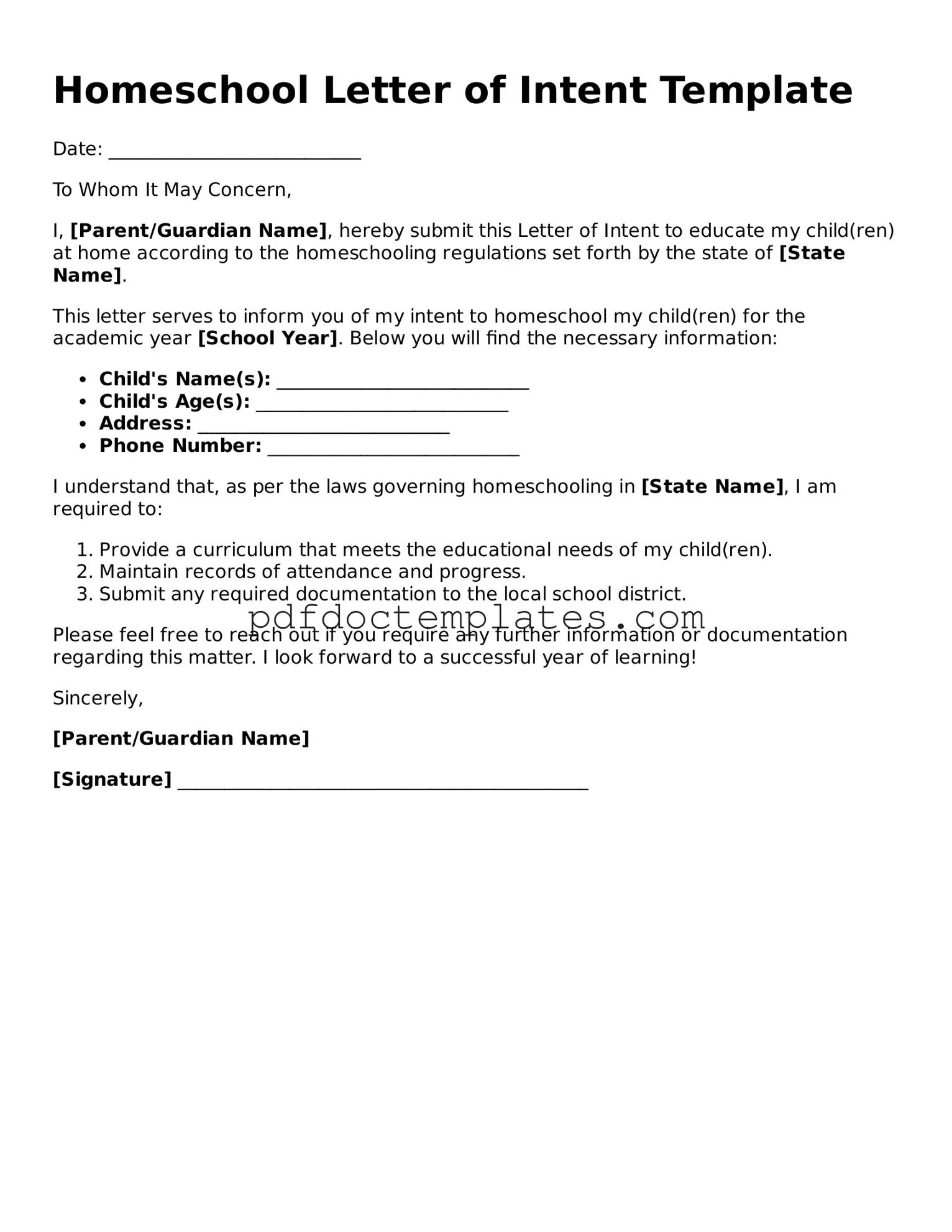Homeschool Letter of Intent Template
Date: ___________________________
To Whom It May Concern,
I, [Parent/Guardian Name], hereby submit this Letter of Intent to educate my child(ren) at home according to the homeschooling regulations set forth by the state of [State Name].
This letter serves to inform you of my intent to homeschool my child(ren) for the academic year [School Year]. Below you will find the necessary information:
- Child's Name(s): ___________________________
- Child's Age(s): ___________________________
- Address: ___________________________
- Phone Number: ___________________________
I understand that, as per the laws governing homeschooling in [State Name], I am required to:
- Provide a curriculum that meets the educational needs of my child(ren).
- Maintain records of attendance and progress.
- Submit any required documentation to the local school district.
Please feel free to reach out if you require any further information or documentation regarding this matter. I look forward to a successful year of learning!
Sincerely,
[Parent/Guardian Name]
[Signature] ____________________________________________
